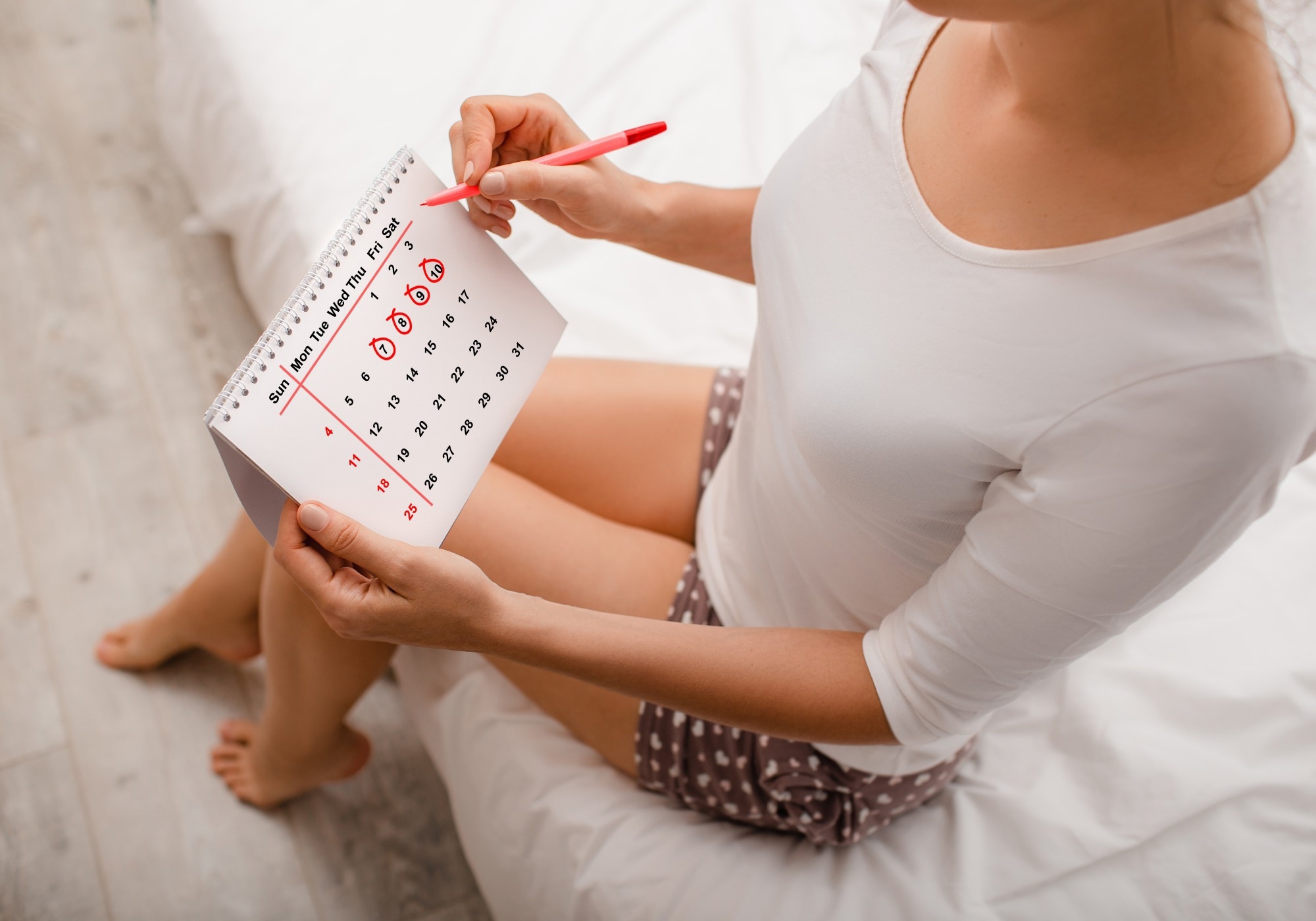Minor changes in menstrual cycle length identified after COVID-19 vaccination
In a recent study published in BMJ Medicine, researchers assessed whether coronavirus disease 2019 (COVID-19) vaccines are associated with changes in the menstrual cycle.

Numerous changes in the menstrual cycle have been reported post-COVID-19 vaccination, including missed cycles, intermenstrual spotting, longer/shorter cycles, and heavier/lighter menstrual flow. Unfortunately, COVID-19 vaccine clinical trials have not captured information on menstruation-related outcomes. Menstruation is a crucial patient-reported outcome; any change, regardless of the scale or clinical relevance, is paramount to the public.
Minor changes in the menstrual cycle might not be significant for scientists/clinicians but could be alarming for those experiencing it and contribute to vaccine skepticism. Previously, the authors reported an association between menstrual cycle changes and COVID-19 vaccines, albeit the sample only comprised United States (US) residents, which limited the generalizability.
About the study
The present study investigated the associations between COVID-19 vaccines and menstrual cycle changes in an internationally-representative sample. The team analyzed prospectively collected menstrual cycle-related data using Natural Cycles, a digital fertility awareness application. Application users voluntarily chose to prospectively track menstrual cycle-related data.
Individuals aged 18 to 45 years were eligible if they had a geographical location, regular pre-vaccination menstrual cycle lengths, and a minimum of three cycles post-pregnancy or -hormonal contraception. Menstrual cycle data ranged between October 1, 2020, and November 7, 2021. Vaccination data ranged from January 2, 2021, to October 31, 2021.
The primary exposure of the study was COVID-19 vaccination status, and the primary outcome was the mean change in the cycle length from the mean of three pre-vaccination cycles. Secondary outcomes included the mean change in the cycle length post-second dose and changes in the length of menses following either vaccine dose.
Sociodemographic data via in-app messages were collected from individuals voluntarily. Two-sided t-tests were used to compare all mean changes in cycle and menses lengths by vaccination status. Longitudinal multivariable mixed-effects models were developed for each outcome. A sub-group analysis focused on the number of doses administered per menstrual cycle. Numerous sensitivity analyses were performed to confirm the robustness of the findings.
Findings
Of more than 41,000 eligible users, 19,622 individuals, representing 255,086 cycles, were included in the final sample. Most participants were younger than 35 (80.5%) and Europeans (33.55%). Two-thirds received Pfizer’s COVID-19 vaccine, followed by Moderna (17.46%), AstraZeneca (9%), and Janssen’s vaccine (1.89%). Individuals in the vaccinated cohort showed a marginal increase (< 1 day) in the mean cycle length during the first vaccination cycle relative to three pre-vaccination cycles.
Contrastingly, non-vaccinated individuals had no significant change in the notional designated vaccine cycle. The cycle length change was 0.71 days between vaccinated and non-vaccinated individuals after adjusting for confounders. About 64.2% of the vaccinated cohort received a second vaccine dose. The double-vaccinated individuals had a mean 0.76-day increase in the cycle length, whereas non-vaccinated individuals had a 0.21-day increase in the cycle length.
After confounder adjustment, the change in cycle length was 0.56 days between vaccinated and non-vaccinated cohorts. There were significantly more individuals in the vaccinated cohort with a clinically relevant cycle length change of eight days or longer. The cycle length change returned to pre-vaccination length in the cycle after the second vaccination.
The increase in menstrual cycle length was mainly driven by those who received two vaccine doses within the same cycle. This sub-group of 743 individuals had an almost four-day increase in the mean cycle length. Among these, 100 subjects had a cycle length change of eight days or more. After adjustment, a 3.7-day increase in cycle length was evident for this sub-group compared to non-vaccinated subjects.
There were no changes in the menses length for either vaccine dose cycle among vaccinated individuals. Sensitivity analyses, which implemented imputation/sample weighting and excluded subjects with emergency contraception use, gynecological disorders, and more variable pre-vaccination cycle lengths, did not change the results in a clinically significant manner.
Conclusions
In summary, the study found that vaccinated individuals had an adjusted increase of < 1 day in the length of their menstrual cycle with either vaccine dose compared to non-vaccinated individuals. Notably, people who received two vaccine doses within one menstrual cycle had an adjusted 3.7-day increase in menstrual cycle length.
There were no significant differences in the menses length among vaccinated subjects relative to the non-vaccinated cohort. Overall, these findings are reassuring and could be used for counseling individuals about the possibilities of COVID-19 vaccination. Although menstrual cycle changes were evident post-vaccination, the differences were minor and resolved in the next cycle after vaccination.
- Edelman A, Boniface ER, Male V, et al. (2022). Association between menstrual cycle length and covid-19 vaccination: global, retrospective cohort study of prospectively collected data. BMJ Medicine. doi: 10.1136/bmjmed-2022-000297 https://www.medrxiv.org/content/10.1101/2022.09.27.22280419v1
Posted in: Medical Science News | Women's Health News | Disease/Infection News
Tags: Contraception, Coronavirus, Coronavirus Disease COVID-19, covid-19, Fertility, Medicine, Menstruation, Pregnancy, Vaccine

Written by
Tarun Sai Lomte
Tarun is a writer based in Hyderabad, India. He has a Master’s degree in Biotechnology from the University of Hyderabad and is enthusiastic about scientific research. He enjoys reading research papers and literature reviews and is passionate about writing.
Source: Read Full Article
